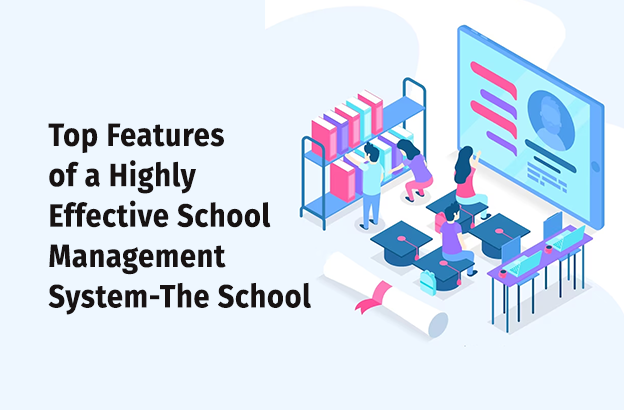In the current digital era, educational institutions are progressively embracing student management software to streamline their administrative processes. A school management system not only simplifies tasks related to student administration, but also enhances communication between teachers, students, and parents. From attendance tracking and grading to generating reports and automating fee payments, robust school management software is essential for efficient school operations. In this blog, we shall delve into the top 11 features of a School Management System.
1. Attendance Management:
This feature allows schools to efficiently track and control student attendance. It helps automate the attendance process, calculate attendance percentages, and generate reports for teachers and parents. A school management system with this feature helps improve accountability and transparency.
2. Student Information Management:
This feature helps schools to store and manage students’ personal and academic information. It includes details like contact information, medical records, attendance records, and academic performance. A student management software with this feature ensures that all student data is organized and easily accessible when needed.
3. Grade Reporting:
This feature allows teachers to record and manage students’ grades and generate report cards. It simplifies the grading process, improves accuracy, and makes it easier to communicate students’ progress to parents. A student management system with this feature automates grade calculations and report generation, saving time for teachers.
4. Admission Management:
This feature streamlines the admission process for schools. It includes features like online registration, fee payment, document verification, and seat allocation. A school management system with this feature helps reduce paperwork, improves efficiency, and provides a seamless experience for both parents and administrators.
5. Email and Communication Tools:
This feature allows schools to send important announcements, notifications, and updates to parents, teachers, and students via email. It ensures effective communication between all stakeholders and keeps everyone informed about school events, schedules, and other important information.
6. Online Assignments and Assessments:
This feature allows teachers to create online assignments and assign them to students. It enables students to submit their work online, giving teachers the ability to grade and provide feedback digitally. A school management system with this feature promotes paperless classrooms and simplifies the workflow for teachers.
7. Parent and Student Portals:
This feature provides parents and students with secure login access to the school management system. It allows them to view attendance records, grade reports, exam schedules, and other relevant information. A school management system with this feature encourages parent involvement and provides students with easy access to their academic progress.
8. Library Management:
This feature helps schools manage their library resources efficiently. It includes features like cataloguing books, tracking book loans, and generating reports on book availability. A school management system with this feature simplifies library operations, enables easy book search, and facilitates book reservations.
9. Student Data Analysis and Reporting:
This feature helps schools analyse student data and generate comprehensive reports. It includes features like student performance analysis, attendance trends, and behaviour reports. A school management system with this feature helps identify areas of improvement, track student progress, and make data-driven decisions.
10.User-Friendly UI:
This feature ensures that the school management system is easy to use for all stakeholders, including teachers, parents, and administrators. It includes intuitive navigation, well-organized menus, and user-friendly interfaces. A school management system with this feature boosts user experience, attracts new users and minimizes their learning curve for new users.
11.Mobile App:
This feature allows stakeholders to access the school management system on their mobile devices. It provides access to important features like attendance tracking, grade reports, and communication tools on the go. A school management system with a mobile app ensures timely access to information and improves engagement between schools and stakeholders.
Conclusion
When it comes to managing a successful school, an effective school management system is essential. From enrolment and course management to student services and outcome-based education, the right student management system can make a big difference. Camu is an excellent option for educational institutions with its robust campus management software that empowers users to streamline administrative and scholastic processes. With features like an inbuilt LMS, student lifecycle management, and outstanding student experience all in one mobile app, Camu is the perfect choice for any institution looking for reliable and innovative school management software.





